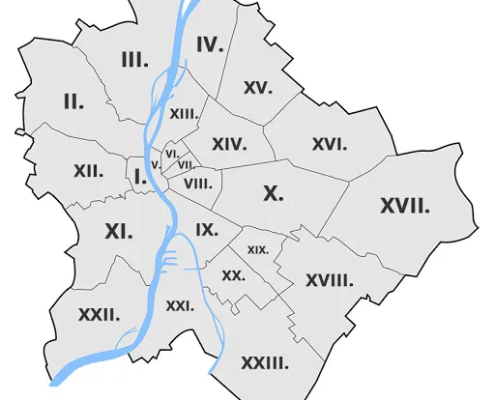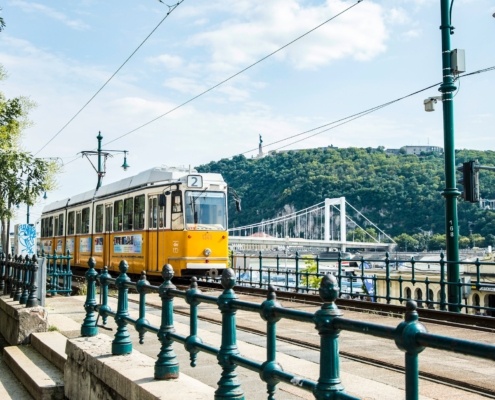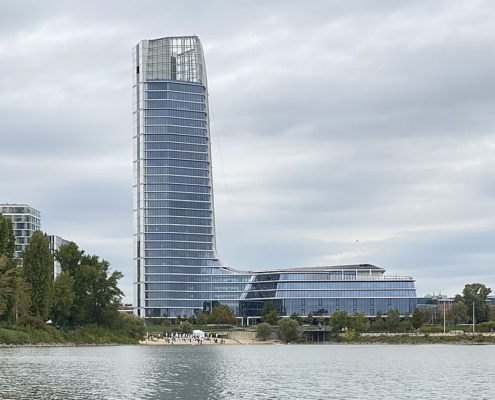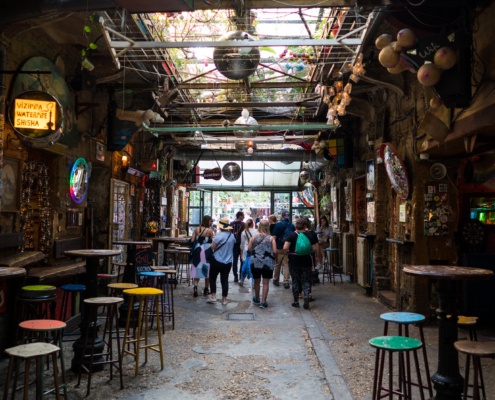Fascinating Facts About Budapest for Data Lovers: A Traveler’s Guide
If you’re a data enthusiast with a love for travel, Budapest is the perfect destination for you! This city offers not only beautiful landmarks and history but also a treasure trove of statistics and quirky facts that will satisfy your curiosity. Whether you’re visiting for the stunning architecture or the thermal baths, there’s a lot to learn about Hungary’s capital. Let’s dive into some interesting facts about Budapest that might just make your trip even more fun!
Comparing Budapest with Other Capitals in Central Europe
Budapest, with a population of 1.7 million and covering 525 km², stands out in Central Europe. But how does it compare to its neighbors?
- Vienna, Austria’s capital and largest city has a slightly higher population of 1.8 million but occupies a smaller area of 414.65 km². So, while Vienna is slightly more densely populated, Budapest spreads out a bit more, giving it a different city feel.
- Prague, the capital of the Czech Republic, covers 496 km² and is home to around 1.24 million people. Budapest has a larger population and area than Prague, but both cities share rich histories and are popular with tourists for their stunning architecture and river views.
- Bratislava, the capital of Slovakia, is smaller in every respect, covering just 367.6 km² with a population of 442,000. This makes Bratislava feel more like a compact, charming capital compared to the sprawling urban presence of Budapest.
When Was Budapest Born?
Budapest as we know it today was officially founded in 1873, when the cities of Buda, Pest, and Óbuda were unified. You can still feel the distinct vibes of these areas, with Buda offering hills with huge parks, and Pest boasting lively boulevards and nightlife.

How Many Districts Are There?
The city is divided into 23 districts, each with its own charm and personality. For instance:
- District XVII (Rákosmente) is the largest in terms of area.
- District VII (Erzsébetváros) is the smallest, but don’t let its size fool you—this district is packed with ruin bars and cool spots to hang out! Here, you’ll find the famous Jewish District, home to the largest synagogue in Europe, along with the most creative street art murals and other urban art.
- District XI (Újbuda) has the highest population, offering a blend of modern life with green spaces and trendy cafés. Competing with Berlin’s Neukölln and Copenhagen’s Vesterbro, Újbuda stands out for its cultural diversity, strong community, and dynamic culinary scene on the Buda side of the city. Just cross the green Liberty Bridge from Pest to Buda and start walking along Bartók Béla Boulevard all the way to Móricz Zsigmond körtér.
The Highest and Lowest Points
Love hiking or admiring views from above? The highest point in Budapest is János Hill, which stands at 527 meters. Take a ride on the Libegő (Chairlift) for a scenic view of the city. On the other hand, the lowest point is the surface of the Danube River, just 96 meters above sea level.
Budapest’s Bridges
Budapest is split by the Danube, and it’s connected by 11 bridges. Some of the most famous include:
- Chain Bridge (Széchenyi Lánchíd): The first permanent bridge connecting Buda and Pest. When you visit Budapest, you’re very likely to cross it on foot from Pest to Buda or vice versa while walking up Buda Castle Hill or visiting the Shoes on the Danube Memorial.
- Liberty Bridge (Szabadság híd): Known for its green color, this bridge is a favorite spot for locals to sit and enjoy the sunset. Here, you’ll find love padlocks and a Kolodko mini statue of Franz Joseph lying in a hammock. It’s also common to cross this bridge on foot to reach the Great Market Hall from the Buda side or to visit Gellért Hill and the Citadel.

Tram 2: The Most Scenic Ride
If you’re into data and love sightseeing, hop on Tram 2, often touted as one of the most beautiful tram rides in the world! This line runs along the river, offering views of iconic landmarks like the Parliament Building and Buda Castle. Just make sure you buy your tickets and validate them on board. If you wish to travel back and forth on the tram, you need to validate another ticket to avoid paying a fine. It’s no wonder that this line has the most ticket inspectors.
Public Transportation by the Numbers
Budapest’s public transportation network is vast and efficient. Every day, 2,300 vehicles are in operation, serving the city’s 4,631 stops, where passengers board approximately 3.3 million times. The iconic 4 and 6 trams, which run almost nonstop, are used 330,000 to 350,000 times on an average workday, making them some of the busiest tram lines in Europe. The city’s fleet includes:
- 1,200 buses
- 110 trolleybuses
- 320 trams
- 75 metro trains
- 2,260 public city bicycles, for those who want to explore the city on two wheels!

Tallest and Oldest Buildings
Budapest’s skyline is evolving with the addition of the MOL Campus, which, at 120 meters (143 meters including the spire), is now the tallest building in the city. In contrast, if you love ancient architecture, check out the Vörös Sün House, located on Buda Castle Hill just opposite the Budapest Hilton Hotel. This building dates back to around 1260 and is one of the oldest structures still standing in the city.
The Biggest and Narrowest
You’ll find contrasts all over Budapest, but none as stark as the “Faluház” in Flórián Square (District III), a massive 885-apartment building that houses about 3,000 people. For something on the opposite end of the spectrum, check out Hegedűs Köz (District I), the city’s narrowest street located in the Tabán neighborhood—perfect for a quirky Instagram shot!
Longest Road: Üllői út
If you’re a road trip fan, you might enjoy knowing that Üllői út is Budapest’s longest road, stretching for 15 kilometers. This road connects the heart of Budapest to the city’s outskirts, giving you a chance to see how the landscape transitions from urban hustle to quiet suburbs.
Budapest: A City of Hot Springs
Budapest sits on a massive network of hot springs, which is why it’s known as the “City of Spas”. There are 123 thermal springs beneath the city, supplying 70 million liters of therapeutic water daily! The Széchenyi Thermal Bath is one of the largest spa complexes in Europe, and a visit here is a must for every traveler.
Underground Secrets: The Metro
Data lovers might be intrigued to know that the Budapest Metro is one of the oldest in the world! Line M1 (the “Millennium Underground”) was opened in 1896 and is now a UNESCO World Heritage site. It’s also one of the quirkiest metro systems, with its small, yellow trains zipping through shallow tunnels beneath the city.

The Ruin Bar Revolution
Budapest is famous for its ruin bars, and quirky drinking spots housed in abandoned buildings, courtyards, and factories. The most iconic one is Szimpla Kert in District VII. These eclectic spaces are decorated with mismatched furniture, and graffiti, and often have vintage finds and old data devices hanging around—perfect for the curious traveler!
Math and Magic at the Parliament
Here’s a fun numerical fact: Budapest’s Parliament Building is home to 691 rooms and is 96 meters high—symbolizing 896 AD, the year the Magyar tribes first settled in the region. Data lovers will appreciate the symmetry and historical nod in these figures!
Nobel Prize Winners Born in Budapest
Budapest is proud to be the birthplace of seven Nobel Prize winners, including Imre Kertész, Szentgyörgyi Albert, Békésy György, Gábor Dénes, Oláh György, and Harsányi János. Their contributions to literature, medicine, and science highlight the city’s rich intellectual legacy.
Join Our Daily Free Tours in Budapest!
Discover the heart and soul of Budapest through our daily Free Budapest Walking Tours! While the internet is a treasure trove of information, there’s nothing quite like experiencing the city through the eyes of local guides who were born and raised here. Our passionate guides share not just facts, but stories and insights about the past and present that you won’t find online.
Whether you’re intrigued by the rich history of Buda Castle, curious about the significance of the Ruin Bars, or eager to understand the cultural nuances of the city, our tours provide a unique opportunity to delve deeper into Budapest’s vibrant life. Join us to learn about hidden gems and local legends, and connect with the city on a personal level.


